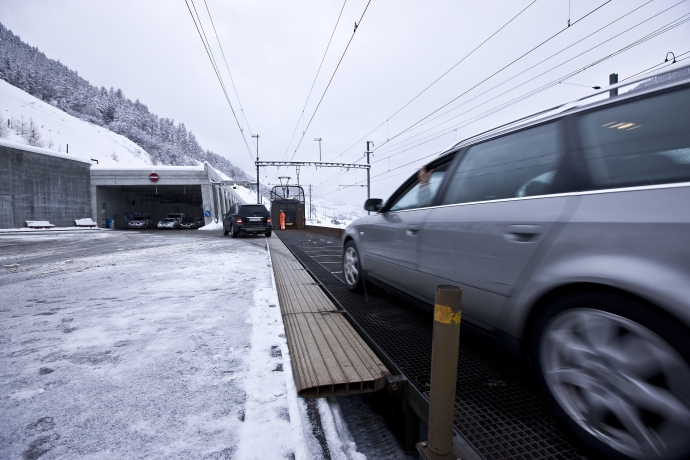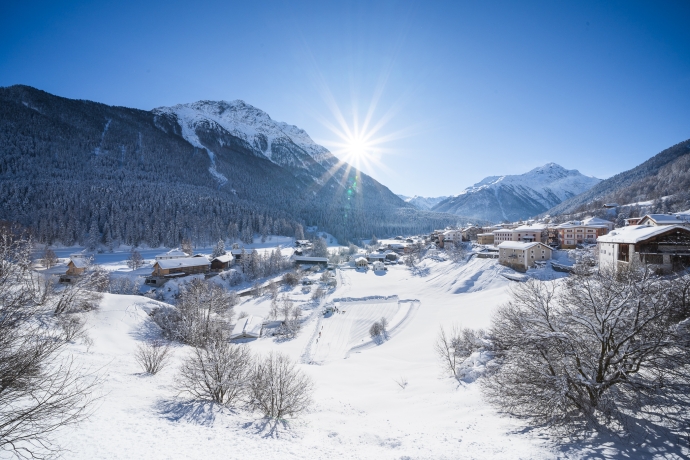Railwaymen and Lower Engadiner with heart and soul
Simon Rohner
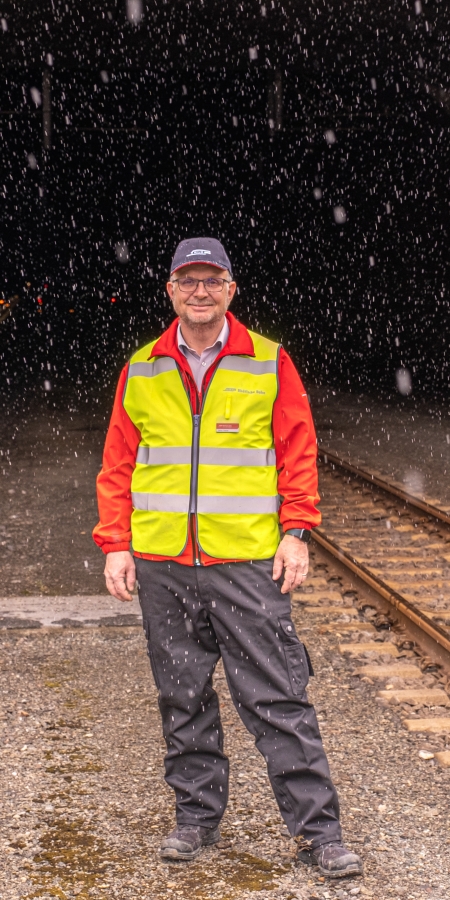
It is an early winter morning. The number of vehicles in front of the Sagliains loading station is still manageable when Simon Rohner joins the queue. He is in for an 18-minute drive through the Vereina Tunnel, which is about 19 km long and was opened in 1999, to Selfranga in Prättigau. He considers it a great advantage that on his usual way to work he sees practically all the employees in person despite the long distances. About 40 colleagues belong to his very constant team. Some have been with the RhB since the tunnel opened, others for almost 40 years. He himself started at the RhB in 1991 as an operations planner and then headed the Lower Engadine sales department from 1997 to 2014. Then his superior convinced him to take over car transport. A position he still holds today. As head of the Vereina car transport and the Scuol-Tarasp/Zernez operation, personnel planning is an important part of his daily work. He now begins this work in his office, which is located in Selfranga in the station building directly next to the tunnel.

Inserts at the front
In the small room there is a round meeting table and two workstations. Simon Rohner shares the office and tasks with his deputy, which allows for coordination in two shifts on peak days. Operationally, a three-shift operation is used throughout the winter for loading and at the cash desk to cover the 20-hour operating time from 5.00 a.m. to 1.00 a.m.. In summer, the shorter operation can be managed in two shifts. Simon is in the middle of detailed planning for the coming weekend when his phone rings. He is needed at the loading bay. Because of his office location, he is immediately ready for action if there is suddenly a lot of traffic or general help is needed. So every now and then he too can help with the «Tischlen» of the cars. An expression his team uses for directing the vehicles on the train.
What I love about my job is the variety between assignments on the front line, organisational tasks and strategic projects.
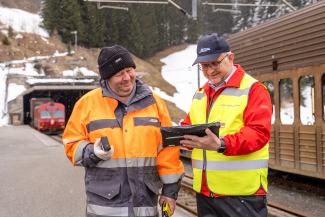
Nothing works without preparation
Weekends in winter are always very busy. Fortunately, the very long waiting times only occur on three to four Saturdays a year, and only for a few hours. When it does happen, it's annoying, of course. Simon fully understands that. Therefore, good planning is the be-all and end-all of his work. This begins in the summer, when the winter holiday plans of Switzerland and surrounding countries are collected. This is followed by rough planning of how many trains and staff are needed and when. Finally, the planning becomes more and more detailed. Two to three days before the weekend, the final touches are made when the weather and road conditions are reasonably predictable. But even with the best planning, there is always a little uncertainty. That keeps the work exciting and thanks to the years of experience of Simon and his team, the planning usually works out very well.
A car transport system naturally offers potential for conflict. As 'individualists', drivers have to fit into a generalised system, wait and pay for it.

Replacement for half a million pass journeys
In 2000, the first year of continuous operation of the car transporter, about 300,000 vehicles were transported. Currently, it's a good half a million each year. 2019 was the record year with 527,000 vehicles loaded, although the Flüela Pass was closed one month longer than usual in spring. The car transporter has three trains at its disposal for operational work. Two of them run every half hour, and the third can be used to relieve the load if necessary. In summer, this third train is always in maintenance. However, it can be quickly made ready for use in one or two hours if, for example, the pass suddenly has to be closed due to weather conditions and more loading capacity is needed. The organisation of the locomotive driver is more difficult, depending on his arrival time.
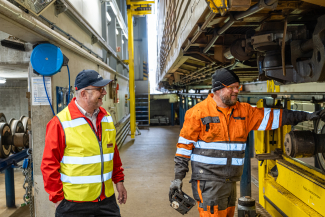
«Troubleshooter» of the car transport
Meanwhile, it's afternoon. Simon is working on a new rescue concept with the acquisition of more vehicles. Project work forms an important part of his function, although he only supports and the projects are led by the infrastructure department. In recent years, for example, he has helped with the renewal of the cash register or the traffic management system. Ongoing topics are, for example, the renewal of the overhead lines or the track replacement in the tunnel. Since he is also responsible for operational intervention management, he must be able to go out at any time in the event of a train incident in the Lower or Upper Engadine and coordinate the situation on site as a «troubleshooter».
When I was once handed the key of a new Lamborghini that wouldn't start on the train, I was quite perplexed. Even more so when the driver took a taxi afterwards and only wanted to be informed about where to pick up the car.
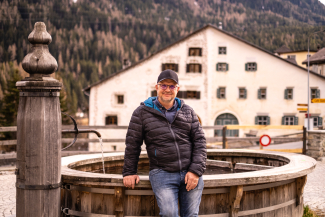
In action for the community
As evening approaches, it is time for Simon to make his way back through the Vereina. He has a meeting waiting for him at the Zernez municipal council, where he is strategically responsible for tourism and sports. Since he was 20 years old, he has been involved in community service on the side. This began with the fire brigade and later included board mandates in the regional tourism organisation before the political level appealed to him. Before the meeting, he briefly stops by at home in Lavin - his favourite place, as he mischievously remarks. Except for seven years in Fribourg for his education, he has spent his whole life here. He is particularly enthusiastic about the almost mystical plain «Plan dal Bügl» above the village in the direction of the Linard hut. In his house, a former shepherd's hut, he likes to do handicrafts in his workshop to compensate. He cannot imagine living in a city. He is a Lower Engadine with heart and soul.
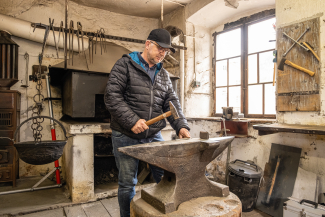
Text: Roger Kreienbühl
Images: Claudio Daguati
